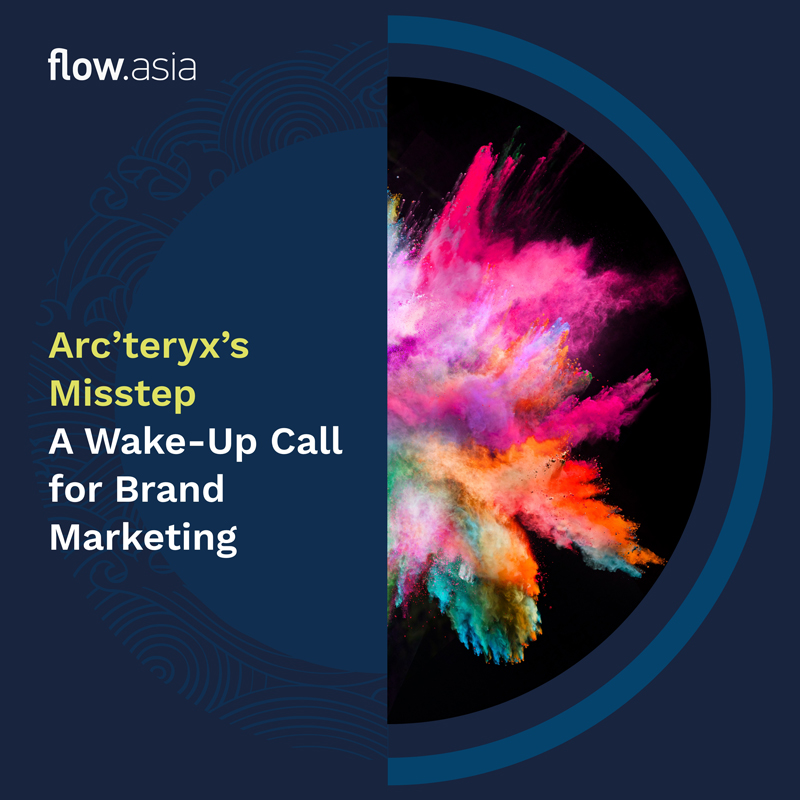

Event Recap
Arc’teryx recently partnered with artist Cai Guo-Qiang for the “Dragon Rise” fireworks show in Tibet’s Jiangzi, at an altitude of 5,500 meters.
The intention was to honor nature with a dragon-shaped display. Instead, it triggered backlash for damaging a fragile high-altitude ecosystem.
By September 22, Shigatse authorities launched an investigation. Both the brand and the artist issued apologies, but public debate is ongoing. The impact extended to Arc’teryx’s parent company Amer Sports and major investor Anta Sports. Anta’s Hong Kong-listed shares fell as much as 6% intraday, closing down 2.22%—a market loss of over HK$7 billion.
What began as an “artistic tribute” quickly escalated into a discussion about ecology, business ethics, and corporate responsibility.
Insight 1: Who’s Really Making the Decisions?
A campaign costing millions doesn’t get approved by accident. The fact it did reveals a shift inside Arc’teryx.
In the past, decisions were led by hardcore outdoor professionals—people with deep respect for nature and performance. Now, leadership includes executives from luxury and fashion, where buzz and symbolism often matter more than environmental awareness.
The outcome? A project meant to celebrate nature ended up harming it.
Insight 2: Consumers Aren’t Who They Used to Be
Arc’teryx’s audience in China has changed.
Instead of climbers, skiers, and trekkers, the core buyers today are high-income urban elites—white-collar professionals and high-net-worth individuals.
Why do they buy Arc’teryx?
- For status and style
- As a social conversation piece
- To signal recognition of a high-end brand
But these consumers aren’t necessarily motivated by environmental values. This gap makes it easier for internal teams to downplay nature and sustainability—even though the wider public still expects the brand to live up to those ideals.
Insight 3: The Apology Missed the Point
After the incident, Arc’teryx issued an apology on Chinese media, stating that “the evaluation of the boundaries of artistic expression should be more professional, and our reverence for nature should be more humble.”
But that wasn’t the real issue. The problem was that the campaign clashed with the brand’s own DNA: nature, exploration, and environmental stewardship.
By sidestepping this core conflict, the brand eroded trust. Consumers don’t want excuses—they want brands to own their mistakes and reaffirm their values.
Our Takeaways: Avoiding the Same Trap
- Protect Core Values
- Creativity and budgets can never outweigh brand principles.
- When values and execution clash, values must win.
- Read Both Explicit and Implicit Expectations
- Even if consumers buy Arc’teryx for status, they still expect consistency.
- Brand values are not just marketing—they’re a social contract.
- Stress-Test Before Launch
- Anticipate potential backlash where values may be questioned.
- Use external experts to flag risks that insiders might miss.
Conclusion
The Arc’teryx “Dragon Rise” controversy proves that marketing’s biggest risk isn’t weak creativity—it’s betraying brand values.
In a transparent world, consumers can accept imperfection. But they won’t forgive self-betrayal.
True branding isn’t just telling a polished story—it’s making sure the story holds up.
That’s why our work with clients always focuses on:
- Aligning values with execution
- Designing campaigns that withstand public scrutiny
- Preventing costly mistakes that should never happen
Reference
- The Guardian — “Arc’teryx fireworks display in Tibet prompts environmental outcry”
- Washington Post — “Outdoor brand Arc’teryx’s Himalayan fireworks stunt sparks environmental probe”
- ArtNews — “Cai Guo-Qiang Under Fire for Controversial Pyrotechnic Show in Tibet”
- WWD — “Cai Guo-Qiang and Arc’teryx’s Fireworks Collaboration at Mount Everest”
- Phayul — “Massive fireworks in Tibet by Chinese artist Cai Guoqiang and Arc’teryx sparks environmental backlash”




